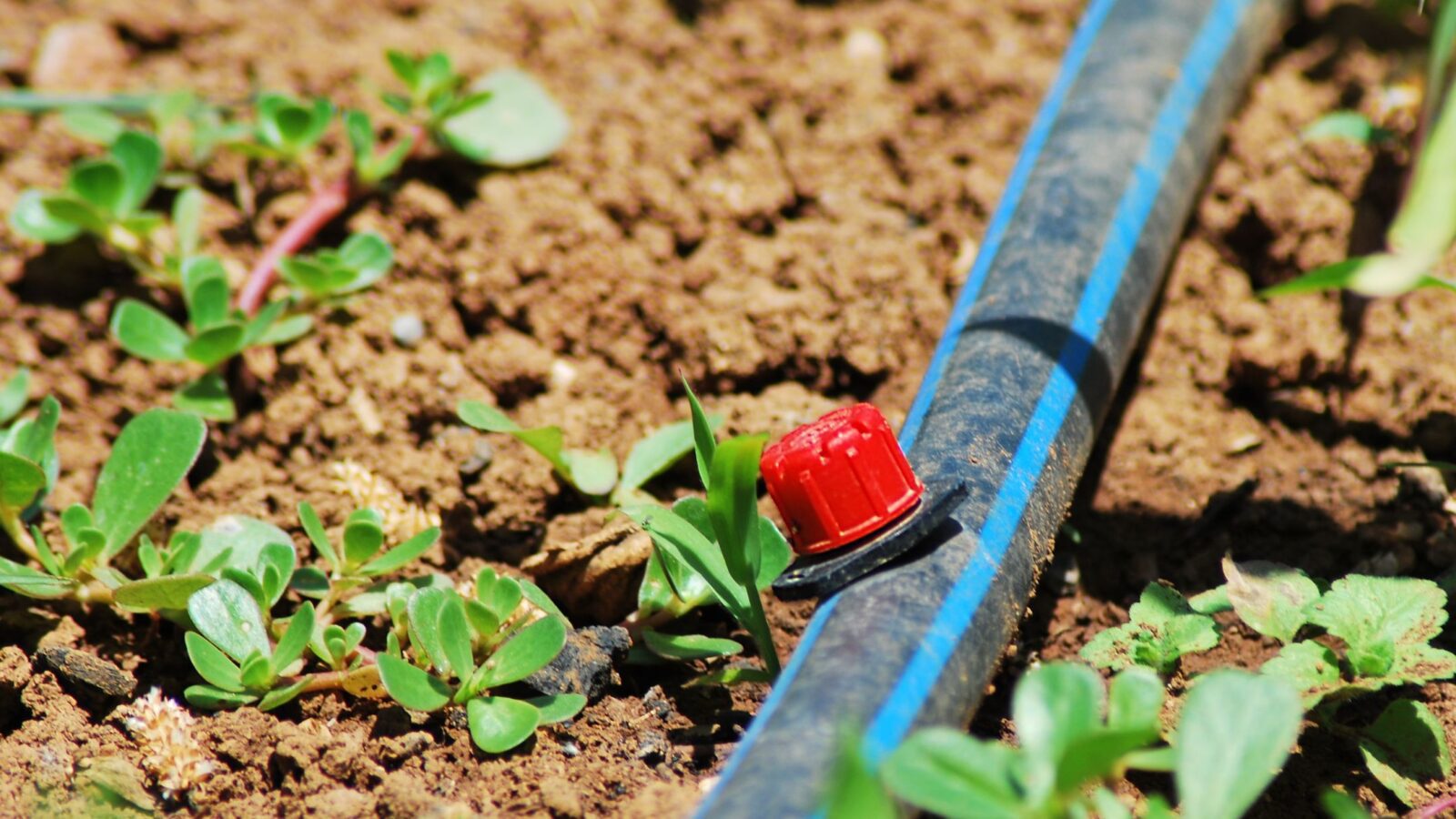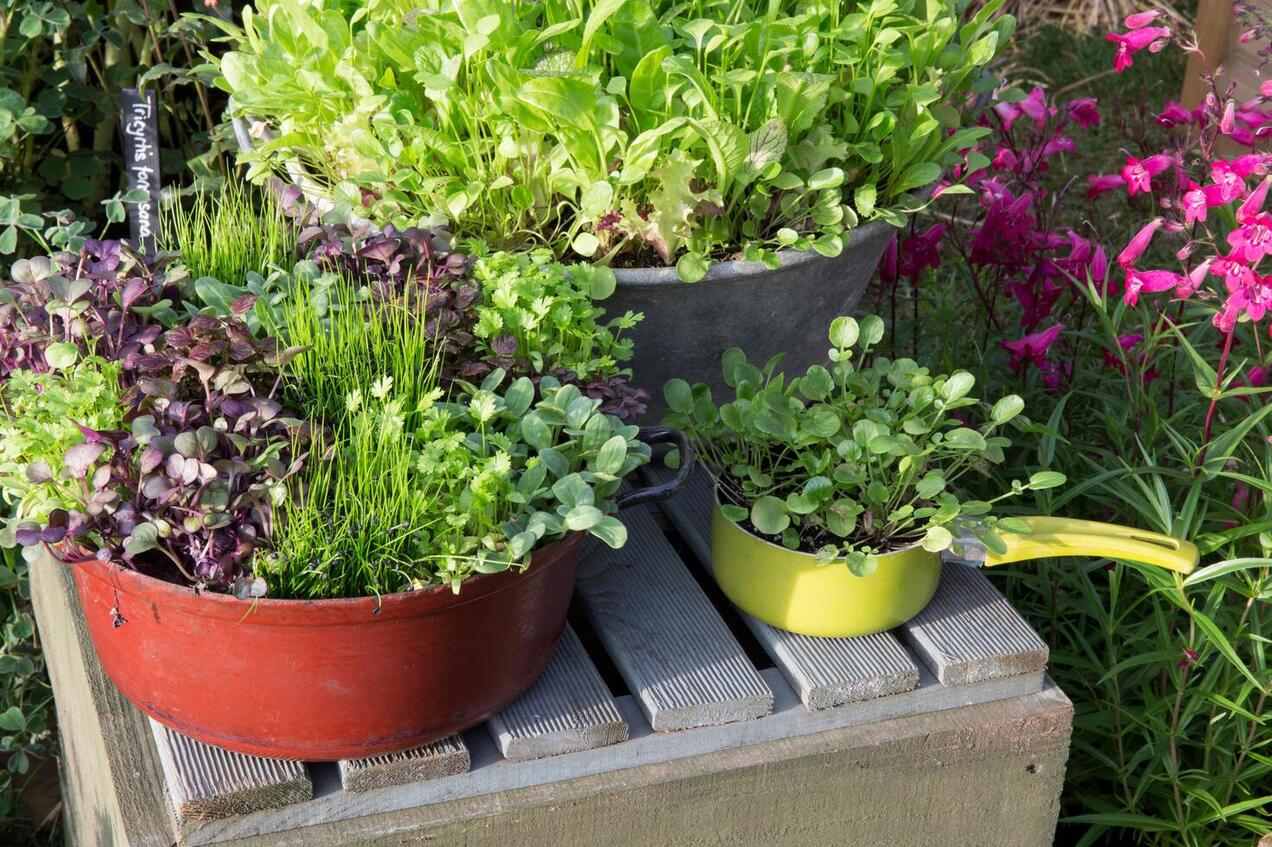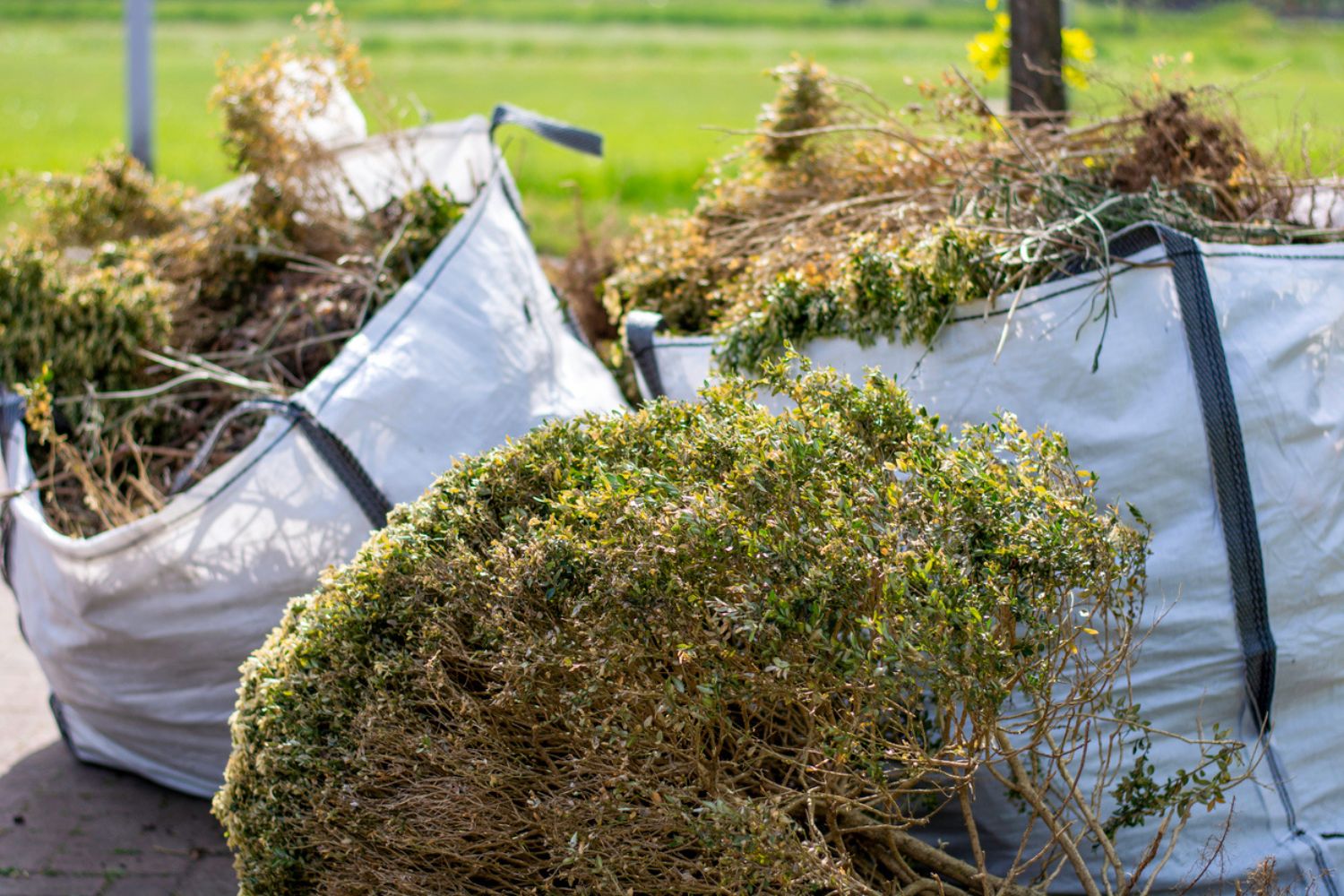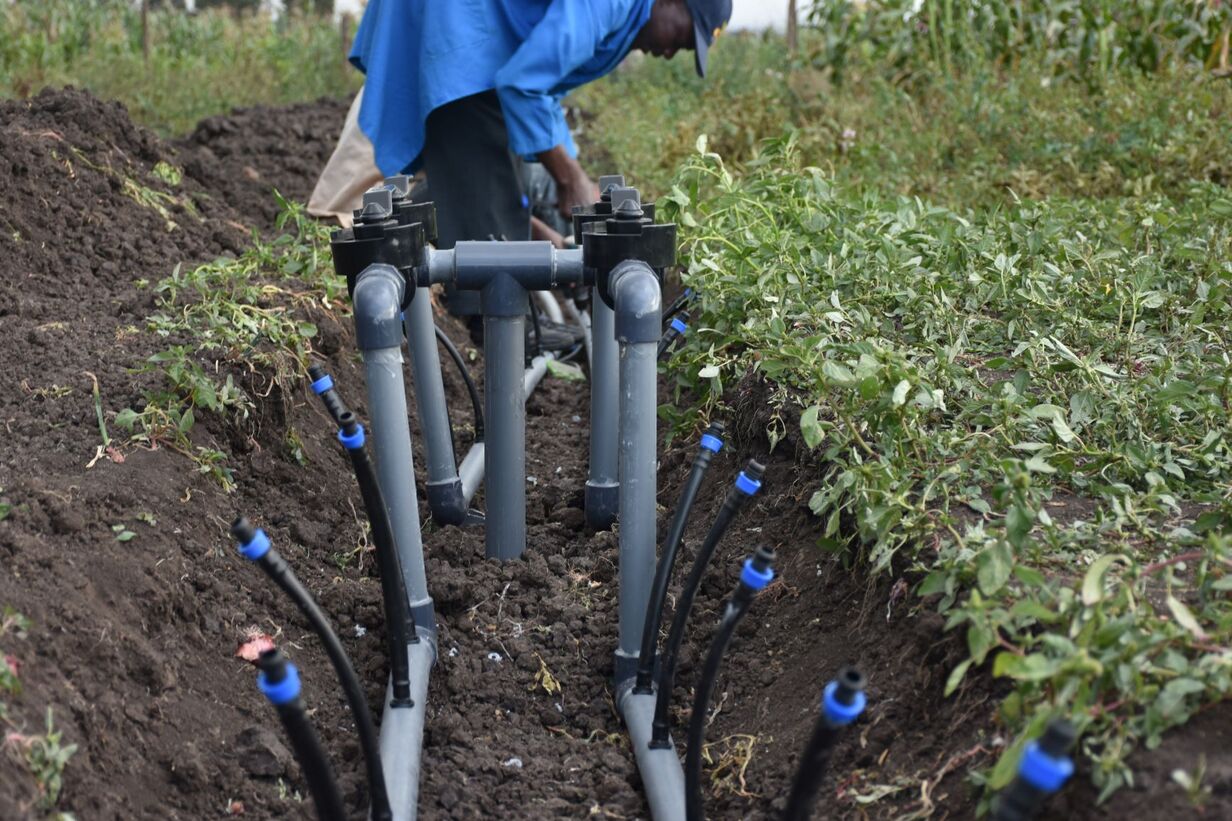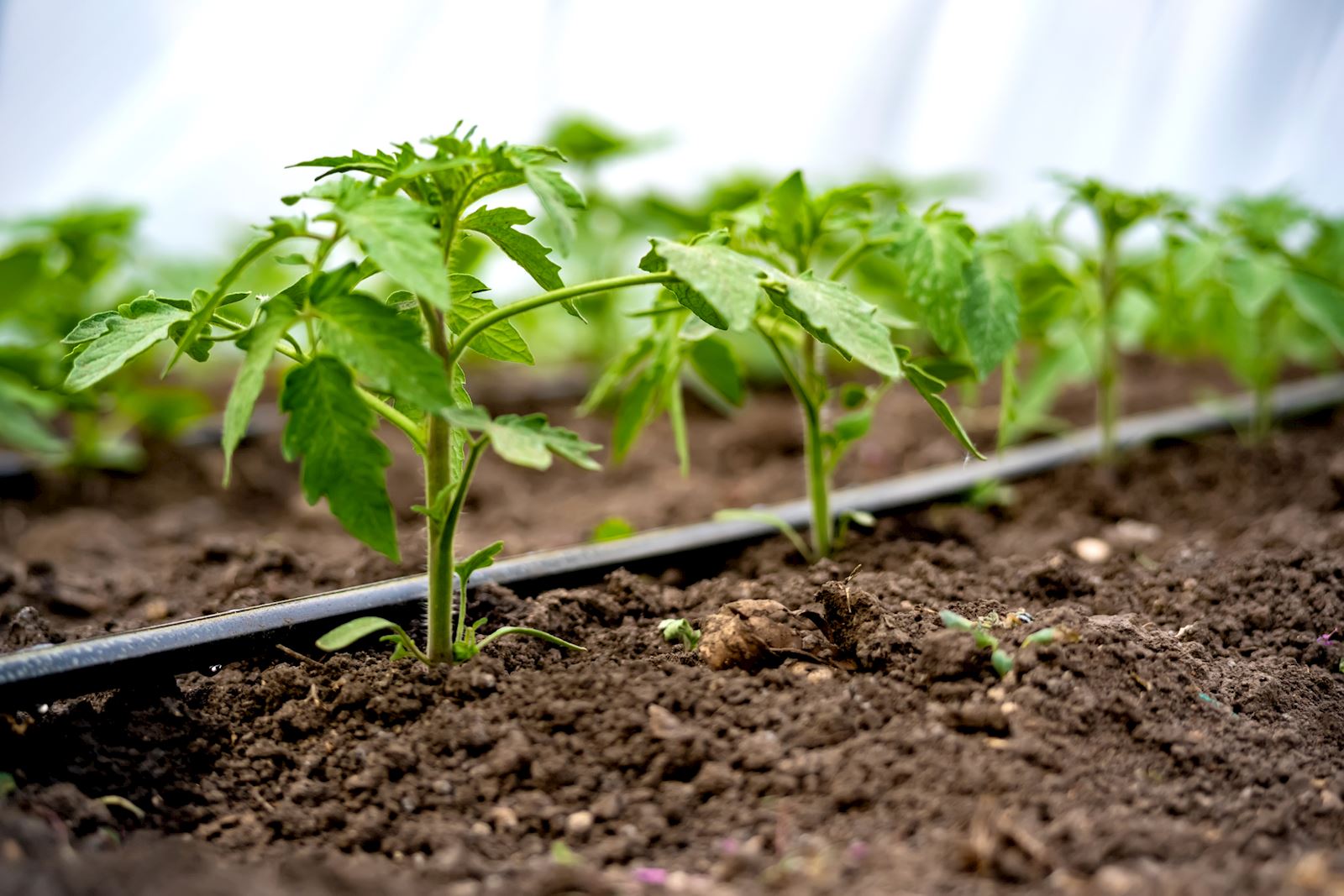Home>Gardening Techniques>Plant Care>How Much Time To Run Drip Irrigation For Shrubs
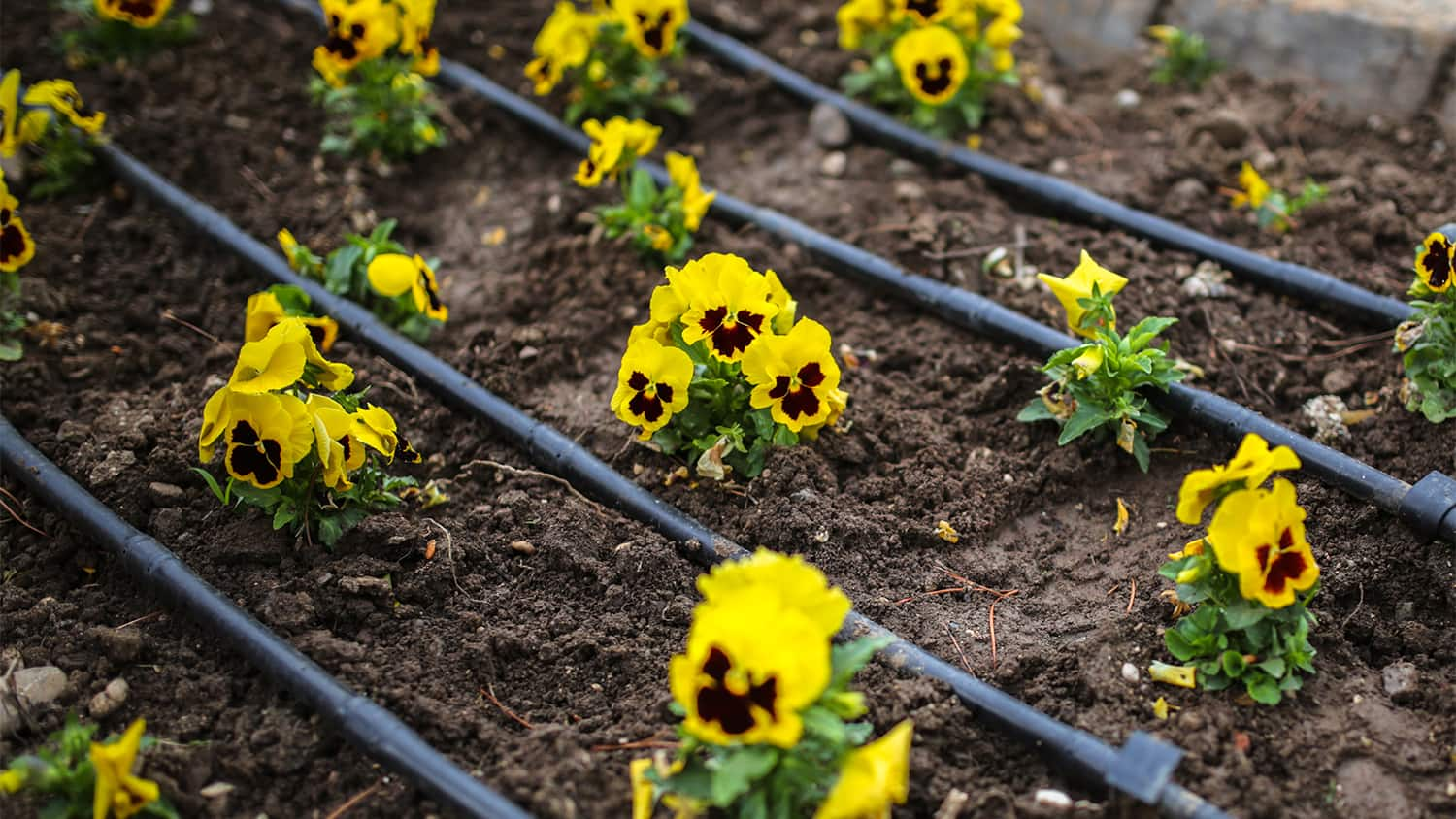

Plant Care
How Much Time To Run Drip Irrigation For Shrubs
Modified: February 6, 2024
Discover the best plant care practices for shrubs and learn how much time to run drip irrigation to keep them thriving.
(Many of the links in this article redirect to a specific reviewed product. Your purchase of these products through affiliate links helps to generate commission for Chicagolandgardening.com, at no extra cost. Learn more)
Table of Contents
Introduction
Welcome to the world of plant care! Whether you have an extensive garden or a small collection of shrubs, one essential aspect of maintaining healthy plants is providing them with the right amount of water. While there are several methods of watering plants, drip irrigation has gained popularity for its efficiency and effectiveness.
Drip irrigation is a system that delivers water directly to the roots of plants, minimizing water waste and ensuring efficient water distribution. Unlike traditional sprinkler systems, which tend to spray water over a wide area, the drip irrigation system allows water to slowly drip or trickle into the soil, providing a steady and consistent supply of moisture to the plants.
Setting the right schedule for drip irrigation is crucial to ensure that your shrubs receive the right amount of water without overwatering or underwatering them. In this article, we will explore the factors that need to be considered when determining the appropriate run time for your drip irrigation system.
By understanding how to optimize your drip irrigation schedule, you can save water, promote the health of your shrubs, and ultimately have a more fruitful and beautiful garden.
Understanding Drip Irrigation
Drip irrigation is a method of delivering water directly to the roots of plants using a network of pipes, tubes, and emitters. It is an efficient and water-conserving technique that has gained popularity among gardeners and landscapers.
The key component of a drip irrigation system is the emitter, which releases water in a slow and controlled manner. This allows the water to seep into the soil, minimizing evaporation and runoff. The water is delivered precisely to the plant’s root zone, ensuring that it reaches the plants exactly where it is needed.
Unlike traditional sprinkler systems, which can lead to water waste due to overspray or wind drift, drip irrigation provides targeted hydration to plants, reducing water loss and minimizing weed growth.
Another advantage of drip irrigation is its flexibility. The system can be customized to accommodate various plants with different water requirements. For example, you can adjust the number and spacing of emitters for plants that require more or less water.
Drip irrigation also helps to prevent disease and pests. By delivering water directly to the root zone and keeping the foliage dry, it reduces the likelihood of fungal diseases and discourages insect infestations.
Besides its effectiveness in conserving water and promoting healthy plant growth, drip irrigation is also relatively easy to install and maintain. Once you have set up the system, it requires minimal effort to operate and can be easily adjusted as needed.
Overall, understanding the basics of drip irrigation is essential for optimizing your watering routine and ensuring the health and vitality of your shrubs.
Factors to Consider Before Setting Drip Irrigation Schedule
Before setting the schedule for your drip irrigation system, it is important to take into account various factors that can influence your plants’ water needs. By considering these factors, you can ensure that your shrubs receive the right amount of water at the right time.
1. Plant Species: Different plant species have different water requirements. Some plants, like succulents, require less frequent watering, while others, like leafy shrubs, may need more frequent irrigation. Research the specific water needs of the shrubs in your garden to determine how often you should water them.
2. Soil Type: The type of soil in your garden plays a crucial role in determining the watering schedule. Sandy soil tends to drain water quickly, requiring more frequent irrigation, while clay soil retains moisture for longer periods, allowing for less frequent watering. Understanding your soil type will help you set a suitable watering schedule.
3. Climate: The climate in your region greatly affects how much water your plants need. In hot and dry climates, plants may require more frequent watering, while in cooler or humid climates, they may need less water. Consider the average temperature and rainfall patterns in your area when determining your irrigation schedule.
4. Stage of Growth: The growth stage of your shrubs also impacts their water requirements. Newly planted shrubs will need more frequent watering to establish their root systems, while mature shrubs may require less frequent watering once their roots have spread and become more efficient at water absorption.
5. Season: The time of year plays a significant role in determining how often and how much you should water your shrubs. During the hot summer months, plants typically require more frequent watering to cope with increased evaporation rates. In colder months or during periods of rainfall, you may need to adjust your irrigation schedule accordingly.
By considering these factors, you can create a customized drip irrigation schedule that meets the specific needs of your shrubs. Remember, it is better to provide slightly less water than overwatering, as excessive moisture can lead to root rot and other plant health issues.
Determining Water Needs of Shrubs
Understanding the water needs of your shrubs is crucial for establishing an effective drip irrigation schedule. By evaluating factors such as plant type, growth stage, and soil conditions, you can determine the appropriate amount of water your shrubs require.
1. Plant Type: Different types of shrubs have varying water requirements. Some shrubs naturally thrive in dry conditions and require less water, while others prefer moist soil. Research the specific water needs of the shrub species in your garden to determine their optimal watering requirements.
2. Growth Stage: The growth stage of the shrubs also influences their water needs. Newly planted shrubs require more frequent watering to help establish their root system and promote healthy growth. As the shrubs mature, their water needs may decrease, but it is important to monitor their moisture levels to prevent underwatering.
3. Soil Conditions: Assessing your soil conditions is essential for determining watering needs. Different soil types retain and drain water at varying rates. Sandy soils drain quickly, requiring more frequent watering, while clay soils retain moisture for longer periods. Conduct a soil moisture test by inserting your finger into the soil to gauge its dryness or moisture content.
4. Environmental Factors: Consider the environmental factors that can impact moisture levels in the soil. For example, sunny and windy conditions may result in faster evaporation rates, requiring more frequent watering. On the other hand, cool and shaded areas may retain moisture for longer periods, necessitating less frequent irrigation.
5. Watering Signs: Keep an eye out for signs that your shrubs require water. Dried or wilting leaves, drooping stems, and surface soil that is dry to the touch are indications that the shrubs need watering. However, it is important not to wait until the plants show severe signs of stress, as they may take longer to recover.
By considering these factors and closely monitoring your shrubs, you can determine their specific water needs and establish an efficient drip irrigation schedule. Regularly evaluate and adjust the watering frequency based on the changing needs of your shrubs and environmental conditions.
Determining Run Time for Drip Irrigation
Once you have determined the water needs of your shrubs, the next step is to determine the appropriate run time for your drip irrigation system. This refers to the duration or length of time that the water should flow through the emitters to provide adequate hydration to the plants.
Here are some steps to help you determine the run time for your drip irrigation system:
1. Calculate the Watering Depth: The watering depth refers to the amount of water that needs to penetrate the root zone of the shrubs. Measure the depth of the shrub’s root system, typically around 6 inches, and aim to deliver water to this depth during each watering session.
2. Determine the Watering Rate: The watering rate is the speed at which water is delivered by your drip irrigation system. This can be calculated by measuring the flow rate of your system or checking the manufacturer’s specifications. The watering rate is typically given in gallons per hour (GPH) or liters per hour (LPH).
3. Calculate Watering Time: To calculate the run time, divide the watering depth by the watering rate. For example, if your shrub’s root zone depth is 6 inches and the watering rate is 1 gallon per hour, you would need to run your drip irrigation system for 6 hours to deliver 1 inch of water to the shrubs.
4. Adjust for Soil and Climate Conditions: Consider the specific soil and climate conditions in your garden. Sandy soil tends to drain more easily, so you may need to decrease the run time to avoid overwatering. In contrast, clay soils retain moisture longer, necessitating longer run times to ensure adequate water penetration. Additionally, hotter and drier climates may require longer run times to compensate for increased evaporation.
5. Monitor Moisture Levels: It is important to monitor the moisture levels in the soil to ensure that your shrubs are receiving sufficient water without being overwatered. Use a moisture meter or simply dig into the soil to check its moisture content. Adjust the run time as needed based on these observations.
Remember, the goal is to provide enough water to reach the shrub’s root zone without causing waterlogging or excessive runoff. Regularly assess and fine-tune the run time of your drip irrigation system to meet the changing needs of your shrubs and optimize their overall health and vitality.
Adjusting Run Time Based on Season and Climate
One key aspect of maintaining an effective drip irrigation system is adjusting the run time based on the changing seasons and climate conditions. The water requirements of your shrubs can vary throughout the year due to factors such as temperature, rainfall, and evaporation rates.
Here are some guidelines to help you adjust the run time of your drip irrigation system:
1. Hot Summer Months: In the peak heat of summer, when temperatures are high and evaporation rates increase, plants tend to require more water to stay hydrated. Increase the run time of your drip irrigation system to compensate for the increased water loss. Monitor the moisture levels in the soil regularly to ensure that it remains adequately hydrated.
2. Winter and Rainy Seasons: During cooler months or periods of increased rainfall, plants generally require less frequent watering as evaporation rates are lower and natural precipitation provides additional moisture. Adjust the run time accordingly by reducing the frequency and duration of watering sessions to avoid oversaturating the soil.
3. Transitional Seasons: Spring and fall are transitional seasons when temperatures and moisture levels fluctuate. Observe the changing weather patterns and adjust the run time accordingly. As temperatures begin to rise, gradually increase the run time to accommodate the increasing water needs of your shrubs. Similarly, as temperatures start to cool, gradually decrease the run time to avoid overwatering.
4. Assessing Soil Moisture: In addition to considering the season and climate, regularly monitor the moisture levels in the soil. Use a moisture meter or simply dig into the soil to assess its moisture content. This will help you determine if the run time needs to be adjusted to provide adequate hydration to your shrubs.
5. Be Mindful of Local Regulations: It is important to be aware of any local water restrictions or regulations that may be in place during certain seasons or in response to drought conditions. Adhere to these regulations and adjust your drip irrigation system accordingly to conserve water resources.
By adjusting the run time of your drip irrigation system based on the season and climate conditions, you can ensure that your shrubs receive the appropriate amount of water to thrive throughout the year. Regular monitoring and fine-tuning of the irrigation schedule will help maintain healthy and vibrant shrubs in your garden.
Monitoring and Maintaining Drip Irrigation System
Proper monitoring and maintenance of your drip irrigation system are essential to ensure its optimal performance and the overall health of your shrubs. Regular inspections and maintenance tasks will help identify and address any issues, ensuring that the system delivers water efficiently and effectively.
Here are some important steps to follow for monitoring and maintaining your drip irrigation system:
1. Regular Inspections: Conduct routine inspections of the entire system, including pipes, tubes, emitters, and connectors. Look for any signs of leaks, clogs, or damage. If you notice any issues, repair or replace the affected components promptly to prevent water loss or uneven watering.
2. Check Emitters: Inspect the emitters to ensure they are functioning properly. Make sure they are emitting water evenly and at the desired flow rate. Clean or replace any clogged or damaged emitters to maintain consistent water distribution.
3. Monitor Water Distribution: Observe the water distribution patterns to ensure that the water is reaching the root zones of the shrubs effectively. Look for any areas where the water is pooling or where plants appear to be underwatered. Adjust the spacing or number of emitters as needed to ensure uniform coverage.
4. Evaluate Soil Moisture: Regularly monitor the moisture levels in the soil surrounding your shrubs. Use a moisture meter or simply dig into the soil to assess its moisture content. This will help you determine if the drip irrigation system is delivering enough water or if adjustments need to be made to the run time or frequency of watering.
5. Clean Filters: If your drip irrigation system has filters, clean them regularly. Filters can become clogged with debris, affecting water flow and efficiency. Follow the manufacturer’s instructions on how to properly clean and maintain the filters to ensure optimal system performance.
6. Adjust for Plant Growth: As your shrubs grow, their water needs may change. Adjust the run time and emitter placement to accommodate their expanding root systems and changing water requirements. This will help ensure that the plants receive adequate water as they mature.
7. Winterizing and System Flush: Before winter arrives, make sure to properly winterize your drip irrigation system. Remove any excess water from the lines and protect the system from freezing temperatures. Additionally, periodically flush the system to remove any debris or sediment that may accumulate over time, which can impact its efficiency.
By regularly monitoring and maintaining your drip irrigation system, you can address issues promptly and optimize water delivery to your shrubs. This will help promote healthy growth, conserve water, and ensure the longevity of your system.
Conclusion
Setting up and maintaining a drip irrigation system for your shrubs is a wise investment in the health and vitality of your garden. By understanding the factors that influence watering needs, determining the appropriate run time, and adjusting it based on seasonal and climate variations, you can provide your shrubs with the optimal amount of water they need to thrive.
Remember to consider factors such as plant species, soil type, climate, and growth stage when determining watering requirements. By monitoring soil moisture levels, inspecting the system regularly, and making necessary adjustments, you can ensure that your shrubs receive water directly at their root zones, minimizing water waste and promoting efficient water distribution.
Maintaining a well-functioning drip irrigation system requires regular maintenance, including checking emitters, cleaning filters, and assessing water distribution patterns. By doing so, you can catch any issues early on, preventing potential problems and ensuring the system’s optimal performance.
Ultimately, drip irrigation offers numerous benefits, including water conservation, reduced weed growth, and preventing disease and pest issues. By optimizing your drip irrigation schedule and providing your shrubs with the right amount of water at the right time, you can enjoy a lush and thriving garden while conserving water resources.
So, give your shrubs the care they deserve by implementing a well-designed and properly maintained drip irrigation system. With a little effort and attention, you can create a healthier and more beautiful landscape that will be the envy of your neighbors.

